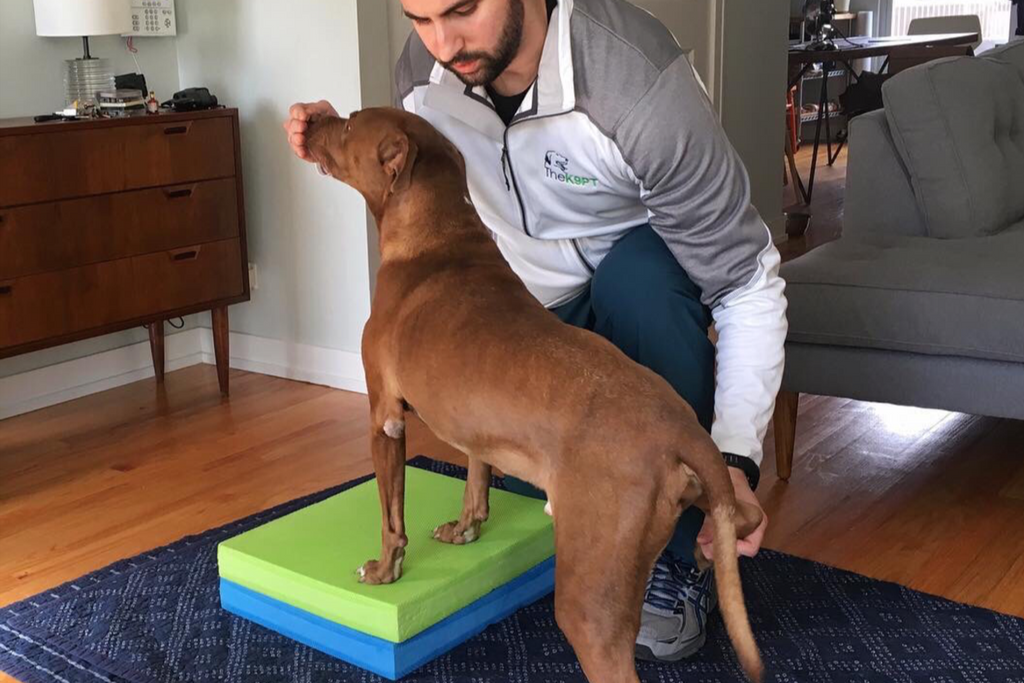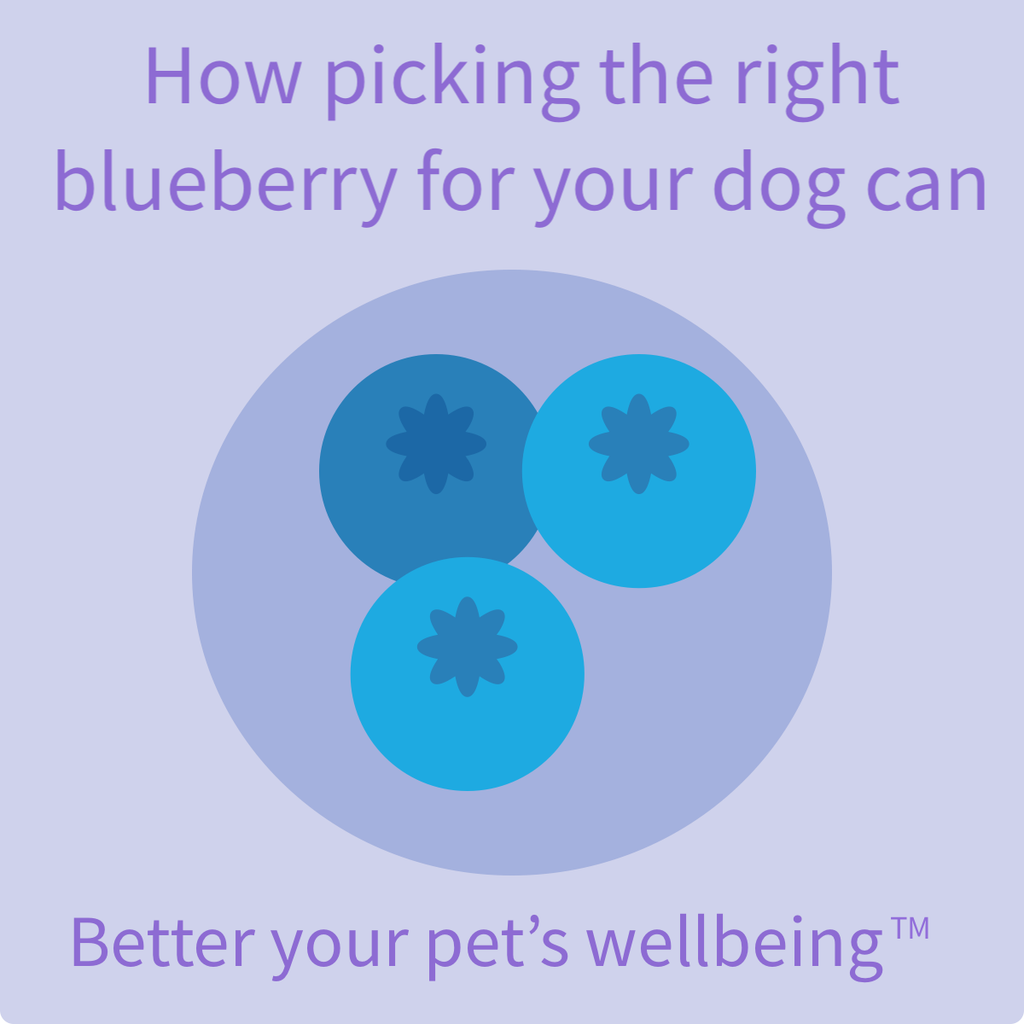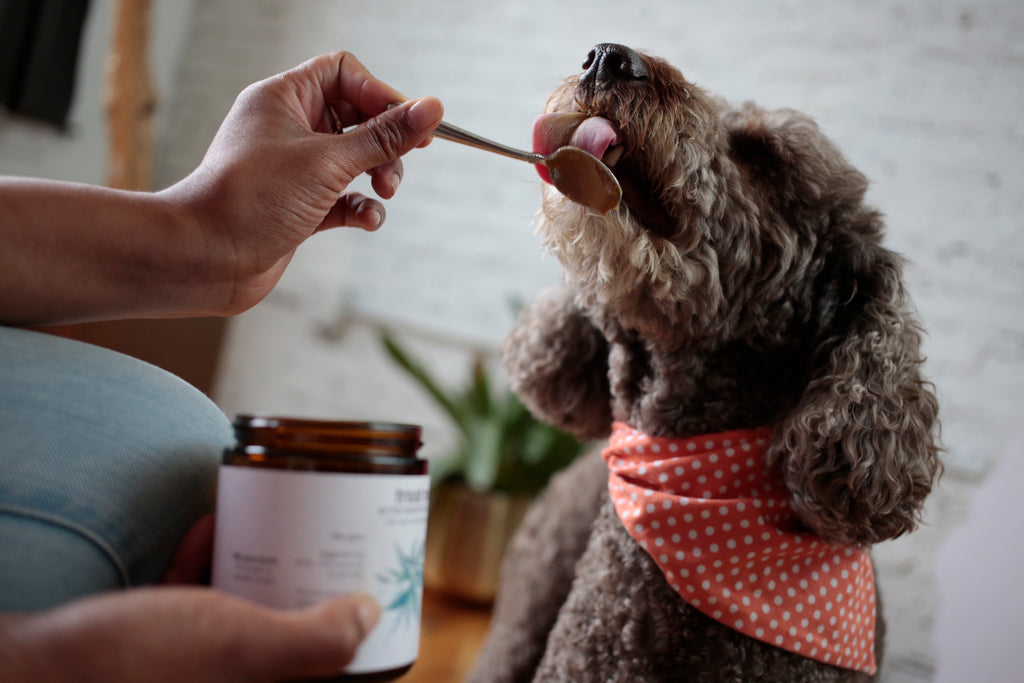Scientific Pet Wellness
Dog Hydrotherapy Can Heal and Prolong Your Dog’s Life

Canine Massage with Caragh Reilly, founder of Wellness & Wags | Blooming Culture


Canine Rehabilitation and Wellness: Physical Therapy for Dogs with Francisco Maia, founder of TheK9PT | Blooming Culture
Welcome to 2019!
Most of us start off with goals for being better people, adding in some extra fitness and leading an all-around more health consciousness lifestyle. But let’s not forgot about our 4-legged best friends too, who can’t always tell us what is going on. Shouldn’t we do the same for them? Remember it’s better late than never to incorporate a wellness plan for our pet’s too. I think most of us our guilty of waiting until our pet is showing signs of illness, pain or disease to start making changes in their daily regimen whether it be supplements, therapy, exercise, diet…the list goes on. But many of the items we will discuss can be added in as a preventive measure to maintain your pet’s health for as long as possible.
At Blooming Culture we want to teach you to Better Your Pet’s Wellbeing using a myriad of modalities that work together. We get a ton of emails with not just questions about CBD specifically, but about pet health. We don’t believe one thing cures all and want to empower you with knowledge on different options that we truly believe in that can help your pet.
When it comes to finding the best health care professional to treat your pet, it can be a daunting task. Your best friend’s life is on the line, so you want to make the perfect choice. But how do you do that? Research and reviews are helpful, but referrals by trusted sources prove to be better.
Today we are kicking off a weekly series focusing on the wellness of your pet. Our first two interviews are with wellness professionals who devote their time to improving a pet’s quality of life through physical therapy and massage. Hopefully, these in-depth Q&As will give you the insight and understanding as to what to look for when making your decision between the two and learning what is right for your pet.
Q & A with TheK9PT
"We specialize in improving senior dogs independence with their daily routine, living their golden years without needing pain meds."

Define canine physical therapy. What is it? How do pets benefit from it?
It is important for me to first explain that, by law, “physical therapy” is a protected term. Only licensed physical therapists, who have graduated with their Doctor of Physical Therapy degree and passed their license exam, can claim or advertise that they perform physical therapy. Hence why in a lot of instances the term rehabilitation is used interchangeably in our field as other certified veterinary professionals provide those services.
But, legal issues aside, just like in human physical therapy the goal of canine rehabilitation is to achieve the highest level of function, independence, and quality of life possible for our patients. One of the main misconceptions about the field is that canine rehabilitation largely consists of laser therapy and underwater treadmill. However, it is my strong belief that the greatest asset of a successful canine rehabilitation practitioner is our knowledge in the field, combined with problem-solving skills to properly develop and progress a successful plan of care. Such plan of care should primarily focus on client education, progressive therapeutic exercises (along with a home exercise program), and manual therapy techniques. A well-educated clinician, with a pair of highly trained hands, will be much more effective than any fancy equipment.

What kinds of problems do you treat?
At TheK9PT we specialize in helping senior dogs improve their independence with daily activities, so they can live their golden years without the need to rely on pain medication. It is a normal aging process for dogs to slow down as they age due to degenerative joint issues such as arthritis, but that doesn’t mean that there is nothing that pet parents can do to help them. We also see patients with a variety of other issues including knee issues (torn ligament, loose patella), hip injuries (arthritis, dysplasia), back problems (general back pain, disc disease, herniated disc) among others.
What does the evaluation process look like?
We start with a detailed review of the patient’s medical records obtained ahead of time from their veterinarian, including previous medical history, recent diagnostic tests, medication and nutritional profile. We also discuss with the pet parent what are their major issues and concerns, as well as goals that they would like to achieve for their pup. That period of talking to the pet parents also allow the dog to get comfortable with us before we do our hands-on evaluation. Afterward we perform a throughout functional assessment guiding them through different movements and activities, carefully observing how they move and if they have difficulty with any specific movement. After all that, we do a complete hands-on joint by joint assessment, evaluating all body parts through palpation, range of motion, joint mobility/alignment, etc. Finally, we put it all together and explain to the pet parent the meaning of what we found during the evaluation and discuss an appropriate plan of care that will help address their pup’s specific needs.

What is the difference between physical therapy and chiropractic?
The AVCA (American Veterinary Chiropractic Association) defines a chiropractic adjustment as a “short lever, high velocity controlled thrust by hand or instrument that is directed at specific articulations to correct vertebral subluxations”. Their rationale is that “subluxations affect the nervous system, local muscles, joints, and even distant organs, glands, and body functions”. Physical therapists receive extensive training in manual therapy as well, but instead of focusing on subluxations it emphasizes improving mobility and flexibility along joints and muscles, as well as decrease pain and swelling through graded mobilization techniques. We use manual therapy as one modality of treatment; however, what differentiates physical therapy is what comes afterward. We use manual therapy as a passive treatment to get the patient feeling and moving better, giving us a “window of opportunity” when patients will respond better to a more active approach, including a progressive and challenging exercise program which will help maintain the improvements achieved through manual therapy for the long-term.
What are some of the treatments you use?
Most patients benefit from a combination of manual therapy (including soft tissue massage), laser therapy and a progressive exercise program. However, we can also use electrical stimulation (TENS) for pain relief as well as neuromuscular electrical stimulation (NMES) to assist with muscle strengthening as needed. With that being said, one of the most important components of what we do at TheK9PT is our prescription for a home exercise program. We emphasize teaching pet parents the tools they need to learn to maintain their dogs healthy as they age. Our goal is not to see a patient continuously for an indefinite amount of time (although in some cases that is necessary for overall wellness) but instead to empower the pet parent on making the right decisions on behalf of their pups.

Do you use hydrotherapy?
No, we do not. As a matter of fact, when I decided to open a mobile canine rehabilitation practice, I was often asked how I could do rehab without an underwater treadmill. But the reality is that physical therapy is more than one modality of treatment, and although hydrotherapy can be helpful with some patients most of them do better with a progressive exercise program instead. I have written an article that discusses that in further detail and would highly recommend for those who would like to learn my rationale behind that philosophy.
What’s the average number of sessions for treatment?
The average number of sessions can vary depending on each patient, including their diagnosis, if they had surgery, and which issues need to be addressed. But, as previously mentioned, our goal is not to see a patient continuously for an indefinite period but instead to empower the pet parent on making the right decisions on behalf of their pups for long-term health.
What’s the cost and does pet insurance cover it?
Yes, pet insurance companies do cover canine rehabilitation; however, the level of coverage can vary depending on each individual policy. We always recommend contacting the insurance company to find out specific details regarding or policy. The AARV also provides a general guideline for pet parents looking for more information.
Can pet parents do the physical therapy at home?
As previously mentioned, one of the most important components of what we do at TheK9PT is our prescription for a home exercise program. The more the pet parents gets involved, the better results they will see. However, it is important to keep in mind that physical therapy is not a “one size fits all approach”, and that a detailed evaluation performed by a canine physical therapist will be needed to address your pup’s specific issues and needs.
Do you have a facility, and/or do you make house calls?
Currently, we only offer house calls. One of the main reasons I opened TheK9PT was because I realized that there was a need for someone to provide the commodity of house calls to some clients. I was working at a clinic and noticed how many clients were unable to follow through their programs, even though they were trying their best to do what was best for their dogs. Even more so with our specialty of helping improve the quality of life for senior dogs, it can be hard for most of them to endure the commute it requires in a city like Chicago to go a clinic.

How do I find a reputable canine physical therapist? What qualifications do I look for?
That is a great question because it can be quite confusing for the public to know if they are working with a qualified professional. This is such a new and emerging field that there are no specific degrees or diploma in college that someone can attain. Instead, physical therapists and veterinarians can go through certification courses to build up on their knowledge and learn the skills required to work in the field of canine rehabilitation. Working with a veterinarian or physical therapist with a certification in canine rehabilitation will ensure that your pet receives rehabilitative care from a professional with the proper training. Simply look for these letters after their name: CCRT or CCRP. These stand for certified canine rehabilitation therapist and certified canine rehabilitation practitioner, respectively. An individual with one of these certifications has received formal training in canine anatomy and physiology, canine behavior and handling, common conditions and injuries, physical therapy assessment techniques, manual therapy, physical modalities (e.g., ultrasound, laser, TENS/NMES), therapeutic exercise, neurological rehab, and more. In particular, physical therapists are regarded as rehabilitation experts given our four or more years of schooling on the subject-before any kind of training with canines has begun. Read more about why it is important to work with a certified canine rehab professional.
How do you differentiate yourself from other physical therapists?
I have been told by numerous clients that one of the biggest differences they have noted when working with me was how I was able to put everything together, from medical history to a full physical therapy evaluation, explaining to them in a way that it made sense and it didn’t feel intimidating or overwhelming. One of the biggest issues in healthcare today, either in human or veterinary medicine, is the lack of time that practitioners have with their clients which leads to short appointments and a lack of rapport built between them. That is one of the many reasons why I enjoy doing house calls as it allows me to spend more time with them, while seeing the dogs in a more comforting and relaxing environment that is familiar to them.
Can you give me some examples of success stories?
There are so many, and I would encourage reading through them on our website or on google/Facebook. One of the most rewarding things for me is to see a senior dog, who has been struggling with activities that were once simple like daily walks and getting around the house, improve to the point that clients describe them as acting like a young pup once again. Biscuit, who just turned 15, is one of the main examples on how physical therapy can help improve their quality of life.
But if I had to pick my absolute favorite success story it would be Emma. By the time I saw her she had had a knee surgery on each leg to repair a torn ligament, and one of those surgeries had severe complications leading to a fracture. Her parents were very diligent and had taken her for weekly rehabilitation sessions for over a year at another clinic and had already spent thousands of dollars on therapies that did little to nothing according to them. I explained to them our philosophy of focusing more on manual therapy and a progressive exercise program instead of modality-based programs, with emphasis on a detailed home exercise program for them to follow. We started an intensive 12-week program and we saw tremendous results! In their own words Emma is doing the “best she's been doing in 3+ years since her first surgery!”. Afterwards they continued with her program at home, and now we only see each other every 4-6 weeks for a “tune-up” and to update her exercises.
This is a relatively new field. How do veterinarians feel about it?
They are generally very supportive and appreciative of physical therapists gaining further knowledge to work with animals and providing our skill set to help their patients. But, it is such a new field that it is barely (if even) mentioned during their education in veterinary school. Because of that we work diligently to educate both pet parents and veterinarians, either in-person or with online content, on what physical therapy really entails and that is more than just using laser therapy and underwater treadmill.

Alternative medicine is gaining popularity. What do you think about CBD oil for pets? How would you integrate it into the overall physical therapy treatment plan?
I believe it is a great alternative for chronic pain management and I have seen tremendous results with my patients who have been using. Chronic pain management is vital for a successful rehabilitation program for senior dogs, but the amount of information online was overwhelming when I was learning more about the topic. It was also hard to find a trustful source, so I was very excited to meet with Andreana and learn how Blooming Culture is helping pet parents in Chicago with a local business that provides high quality and sustainable CBD oil.
You say you’re on call 24/7? How do you do that?
That means that EVERY client has my personal cell phone number, not just the business number to contact. They can reach out to me at any time with questions or concerns, even on weekends and holidays if needed.
At the end of the day, what do you say to yourself?
“Did I live? Did I love? Did I matter?” – Brendon Burchard. I have found my true passion in canine physical therapy and live every day to the fullest to help as many pet parents as possible. That has led me to not only have a successful business, but also to serve as inspiration for other physical therapists who wish to do the same. I have been able over the last year to start coaching and mentoring physical therapists all over the United States who have that same goal, and through them I will be able to continue helping even more pet parents beyond just Chicago.


What is Organic SunButter aka Sunflower Butter, and Why is it Better than Peanut Butter for Your Dog? | Blooming Culture
Move over Peanut Butter, there is a better creamy spread for your pet. And as you know from our tagline, we are ready to Better Your Pet’s Wellbeing.
Studies have shown that certain foods cause inflammation in not only humans but animals too. Inflammation is a catalyst for cancer, heart disease and arthritis, all things that can afflict your furry friend. Over 50% of dogs over the age of 10 yrs. old develop cancer and diet can play a key role. SunButter actually has properties that can reduce inflammation, so we are already winning on that note.
Sunflower Seed Butter has been around since the 80s and has been growing in popularity lately with all the attention on wellness. It’s made from mild nutty tasting sunflower seeds! No way, PB lovers everywhere are thinking. Nothing can replace peanut butter. But, if it was a healthier treat for your pup, would you reconsider?
While it’s true that the nutty deliciousness of Peanut Butter is hard to beat, let’s look at why sunflower seed butter might be a better choice not just for your pet but even for you – especially if you have nut allergies.
Why Sunflower Seed Butter?
For starters, one tablespoon of SunButter has only 93 calories and it’s a good option for anyone allergic to nuts. Moreover, according to the U.S. Department of Agriculture, sun butter has significantly more unsaturated fat, magnesium, zinc, iron, and Vitamin E than Peanut Butter.
Vitamin E, one of the body’s favorite antioxidants, balances cholesterol levels and reduces free radical damage. Just one tablespoon of seed butter provides a whopping 24 percent of our body’s daily needs. And, while that same size serving has 9 grams of fat, in a 1-tablespoon serving, almost 90 percent of the fat is unsaturated which is the good kind that and helps lower cholesterol and fight inflammation.
A Pet’s Best Friend
What else makes SunButter such a superstar? Seed butter is a safer spread that has proven to be more curative for animals that have food allergies or are yeasty. So many pets suffer from both of these conditions. Does your dog have teary eye stains, super smelly paws and ears, or skin irritations? Much of it, if not all, can be tied back to diet.
Peanut Butter Can be Toxic
Did you know that peanuts are not really nuts but instead belong to the legume family which includes bean, peas, and lentils? This means that like their species, peanuts grow underground and tend to be colonized by a common ubiquitous mold called Aspergillus. This mold is a source of aflatoxins which are poisonous carcinogens that naturally grow in the soil and decay vegetation, hay, and grains. The aflatoxins can wreak havoc on your pup’s allergies and yeast growth.
Exposure to mold and mold components is well known to trigger inflammation, allergies, asthma, and immune dysfunction. Dr. Barbara Royal, a veterinarian based in Chicago and known nationally in integrative pet care, goes over her top foods to stop feeding your pet and peanut butter is #1.
The USDA does monitor the amounts of aflatoxins in foods to ensure they don’t go over recommended limits, but why run the risk? The only way to guarantee that they are really low is if the company producing the peanut butter performs a mold test. We can tell you from experience that most companies do not perform their own test.
Choosey mothers may choose JIF as they want you to believe, but a horrible option for pets and you! While Peanut Butter in its purest form is just peanuts ground into a paste, it’s the commercial brands that add sugar, vegetable oil, and even trans fats which cause health issues like heart disease. And, again, another reason to choose SunButter.
Blooming Culture wants healthy pets and that’s why we chose SunButter to be the star ingredient in our CBD TREAT ME™ snack. It’s not only more nutrient-dense but considered to be a Superfood. The seeds are certified organic USA grown and produced in a nut-free facility.
Make the Choice
Some people rely on Peanut Butter as their "go-to" treat for their pet and we understand the reluctance to try something new. But knowing there is a better alternative that aligns with a healthier food regime - might be worth trying. After all, it's your best friend's wellbeing at stake.
*If you are feeding your dog copious amounts of Peanut Butter, PLEASE make sure it is from a trusted source and you have done your research. When choosing Peanut Butter or Sunbutter, read the label to make sure it is free of added salt, sugar, or any artificial sweeteners. Xylitol is a very popular one that is showing up in more and more Peanut Butters and can be deadly to a dog. When reviewing both Sunbutter options at Trader Joe's neither were good - one had added salt and the other contained Xylitol.*

Marula Oil: A Natural and Non-Toxic Ingredient to Create the Best Paw Balm

Vestibular Syndrome aka Vestibular Disease in Your Dog

Can My Dog Have Blueberries? Blueberries are High in Antioxidants Making Them a Great Healthy Treat for your Dog.

Raise The Woof Podcast Extended - CBD and Your Pet with Blooming Culture
To listen to the podcast click here.
Pet CBD: The Basics.
What is CBD?
Cannabidiol, also known as CBD, is the most abundant non-psychoactive cannabinoid - a class of compounds unique to cannabis - found in the hemp plant. It accounts for up to 40% of the plant’s extract and is considered to have a wide variety of wellness properties.
Will CBD Get Your Pet High?
CBD oil with >0.03% of THC is non-psychoactive, so no - it will not get them high. But it is very important to keep actual marijuana away from your pet. In the states that have legalized marijuana, vets have seen a huge increase in animals coming in from THC toxicity which can be fatal. This is resulting from irresponsible pet owners leaving out their products or people not disposing their marijuana properly and dogs eating it off the street or on a hiking trail.
Why Does CBD Matter?
The more we learn about CBD, the more we realize it has the potential to revolutionize medicine. Hundreds of studies have shown CBD to have medicinal properties that can act as a therapeutic intervention for everything from seizures to inflammation which can cause chronic pain and disease.
How Does CBD Work in Your Dog's Endocannabinoid System (ESC)?

All mammals have an ESC or nervous system and most illnesses/diseases are linked to it. CBD interacts with receptors/activators TRPV1, 5-HT1A, & GPR55 which regulates mood, sleep, pain, memory, appetite, inflammation, nausea, and stress levels. In canines specifically, CBD binds itself loosely to the receptors, but for a longer duration than humans. It regulates what is out of balance to evoke a longer-lasting therapeutic response without causing toxic effects. Once CBD is completely processed, they safely pass through the liver and digestive system.
Why Give Your Pet CBD?
CBD brings homeostasis or balance back to your pet to make everything work more efficiently. We like to refer to it as a good support system for your pet. It can help give anxiety and pain relief, protect the nervous system, act as an appetite stimulant, reduce inflammation, aid in treating seizures & epilepsy, promote heart health, and it's non-toxic. It has proven to be an effective treatment for pets that have/had cancer, leash aggression, digestion/nausea, mobility issues, skin problems, allergies and so much more.
Why Blooming Culture?
What Was the Catalyst for Starting Blooming Culture?
I saw a need - and it started with myself. Through my own battle with inflammation and pain, medical marijuana was prescribed to me. For years I tried different medications and therapies that didn't work or had awful side effects. I was open to exploring other options and started researching. This was an area that I did not know much about and I think it’s extremely important to know about what you are putting in your body. I quickly discovered that I have a very sensitive endocannabinoid system and the THC (which makes you high) was not for me. So, I started looking into just the CBD compound.
My research proved to be confusing, complex, and even a little crazy at times. There are so many opinions on this subject that I didn't know who to believe or trust. Many people are in it for the money and don't care about quality. I read various studies and government letters sent to CBD oil companies that asked them to cease and desist on sales. Independent studies uncovered that many seller's products did not contain the amount of CBD that was stated on the label.
First and foremost, I wanted to create a product that I would use myself and feel confident giving it to my pet. What a lot of people don’t realize is that CBD Oil is the same for pets and people, it is just dosed differently. We already have a company that makes pups happy with our premium dog ice cream, Arrfscarf, but we wanted to create something that could make a difference in their overall health and wellbeing. It was also important for us to stand true to our ethos to be transparent and give back to organizations that also help animals. 3% of every sale (10% on t-shirts) is donated to Live Like Roo, a non-profit providing support to animals and their owners dealing with a cancer diagnosis and K9 4 Keeps, a Chicagoland animal rescue.
We Need to Talk More about CBD.
We came up with the name Blooming Culture because we wanted to have discussions with like-minded individuals about their personal stories and journeys with CBD. We can all learn different things from one another. Being in Chicago, I can tell you that CBD is a newer topic here. I just heard from one of our stores in the city that people were buying pet CBD for themselves because they didn’t want anyone to know it was for them. But yet in other states, it’s literally in everything from water to beauty products. We want to help change the stigma of a “pot-smoking stoner” being the only person that uses CBD to something that is widely accepted. To learn more, we made a few trips to Colorado and California to talk with others that have been in the space longer and where it's not regarded as taboo. One thing we have realized is that in Chicago it is the animal rescue communities that seem to be at the forefront of using it for animals. Join our FB group and follow us to join the community.
What Should You Look for When Purchasing CBD Oil?
We recommend always looking for 3rd party lab results and to research the brand you are buying from. Two different people I spoke to when I first got started said that their CBD gave them crazy nightmares and both were purchased at what I would deem reputable health food stores. This could have been because of the grade of the CBD oil or residual impurities and pesticides it contained. Pets can’t tell us exactly what they're experiencing so it’s super important to do your due diligence when purchasing for your loved one.
When researching a brand see where they source. We wanted to have a relationship with our grower so we made sure they were in the USA. Many CBD Oils on the market come from industrial hemp in Europe which uses only the stalk and not the whole plant. One big hemp-based CBD product for pets states on their site “formulated & manufactured in the USA”, but it leaves out where the CBD is being sourced from. Verbiage can be very tricky and, in this case, would lead you to believe it’s grown in the USA when it doesn’t actually state that anywhere on the site.
Is our product certified organic?
Since the FDA has not regulated CBD yet, we can legally only state our product is “organically grown” and registered with the Colorado Department of Agriculture.
Our Dosing and Milligrams (Mg’s).
We wanted to be transparent in our dosing. There are so many different mg’s to choose from on the market and such disparate pricing. When buying CBD, the less expensive brand might turn out to be more costly. That's because people don't understand that you have to factor in your pet’s weight. So you may end up going through a bottle in a week. For example, a 100lb pup using our Calm That Roar will last apx. 23-30 days (depending on what it is being used for).
ETC…
How Much CBD is Too Much for My Pet?
What’s amazing about CBD is that you don't have to worry about overdosing. Studies show that while cannabinoid receptors are found in different areas of the brain, there are none in the brainstem which is responsible for controlling breathing and heart rate. This means that cannabinoids do not have the ability to shut down the body’s breathing and blood circulatory system. However, if a pet ingests too much CBD oil it can lead to excessive sleepiness or diarrhea. Compared to many pharmaceuticals, these are relatively very minor side effects.
Key Items Regarding Dosing CBD Oil.
Start with the recommended dose found on the Blooming Culture site. You can always titrate up if you aren’t seeing results after a few days or up to 7 days for chronic inflammation. Keep in mind that like with people, dosages may need to be tweaked depending on the individual pet. It’s also important to remember that CBD oil works best if given consistently every day. On average it takes anywhere from 15 min to 1.5 hours to see full results once taken.
How should I administer the CBD oil?
The quickest and most bio-available way for your pet to get the effects of CBD oil is by putting it directly on their gums or under their tongue. After administering, wait 30 min before feeding any food or treats. We know how difficult it can be to give a pet medication so read here for other tips and ideas.
Topicals.
We also offer a topical that is great for skin allergies and can be used in conjunction with one of our orals. Topicals do not penetrate deeper than the skin layer so do not worry about overdoing the CBD :)
Why Does My Vet Not Prescribe CBD Oil?
Legally, veterinarians are not allowed to prescribe CBD. That is not to say some don’t and we would love it if they did. But unfortunately, until it becomes legal at a federal level they are not supposed to. Also, this means that many vets are not familiar with all the amazing things it can do for your pet.
Ziva Cooper, associate professor of clinical neurology at Columbia University, whose research focuses on the therapeutic potential of cannabis and cannabinoids says, "Pre-clinical studies have shown promise for the treatment of chronic pain, neuro-inflammation, anxiety, addiction, and anti-psychotic effects in animals, mostly rodents."
Adding to the therapeutic legitimacy, CBD was recently FDA-approved to be used in an epilepsy drug called Epidiolex making it the first cannabis compound to be federally recognized. Win one for CBD!
Will my pet’s drugs interact with CBD?
We always recommend you ask your vet first. You can also check out this list to see if your pet’s medication falls in this category.
______________________________________________________________
*For more Q&As on CBD click here. If you have any more questions, we are only an email away - hello@bloomingculture.com
We also love this Podcast for more reliable information.


